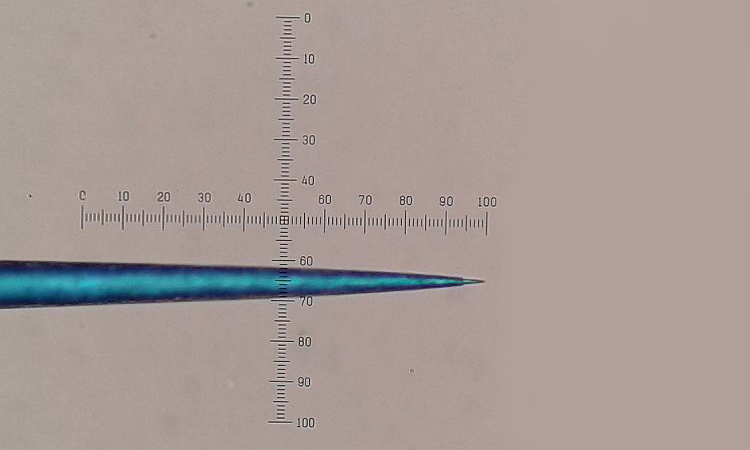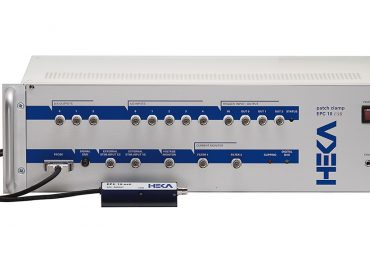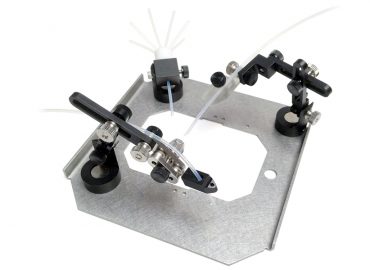New Tungsten in Glass Electrodes
We will soon be able to offer a new range of high performance tungsten-in-glass microelectrodes for extracellular neuronal recordings. Modelled on the classic electrodes introduced by Merrill and Ainsworth, which are no longer available, we expect the superior performance characteristics of these new electrodes will prove of great interest to our customers.

Magnified image of of a 12µm electrode tip (1div = 2.5µm)
Proven Performance
Exemplary recordings from guinea-pig auditory brainstem have demonstrated that these new electrodes offer superb cellular unit isolation characteristics, large spike amplitudes and excellent long-term recording stability. These electrodes were originally manufactured in small numbers for the exclusive use of researchers at the University of Cambridge, however, the fabrication process has been extensively developed and they can now be produced in quantities that permit wider availability.

Sample recording of driven [50ms] and spontaneous [200ms] activity
from guinea-pig auditory brainstem
Request Free Samples
Of course, we wouldn’t expect you to take our word for it, so we would like to take this opportunity to invite you to try them out – for free! We expect a lot of interest and we will only have a limited number available, but if you are keen on obtaining some samples and are willing to provide performance feedback, please get in touch with us so we can discuss your individual electrode requirements.
Main Electrode Features:
- Shank diameter: 125µm, tungsten wire (250µm shank diameter tungsten wire may be a future development).
- Overall length: ~38mm or ~76mm.
- Glass insulated length: ~25mm or ~55mm.
- Taper: <5 degrees.
- Uncoated tip (plating is a possible future development).
- Impedance: dependent on the exposed tip length (surface).
- Exposed tip length: see table below.
- Electrodes are NOT suitable to penetrate the dura, due to the delicate tip.




